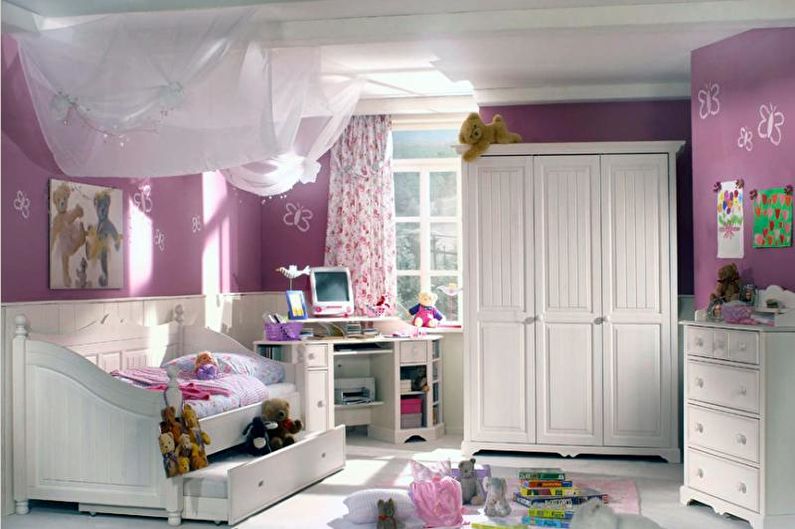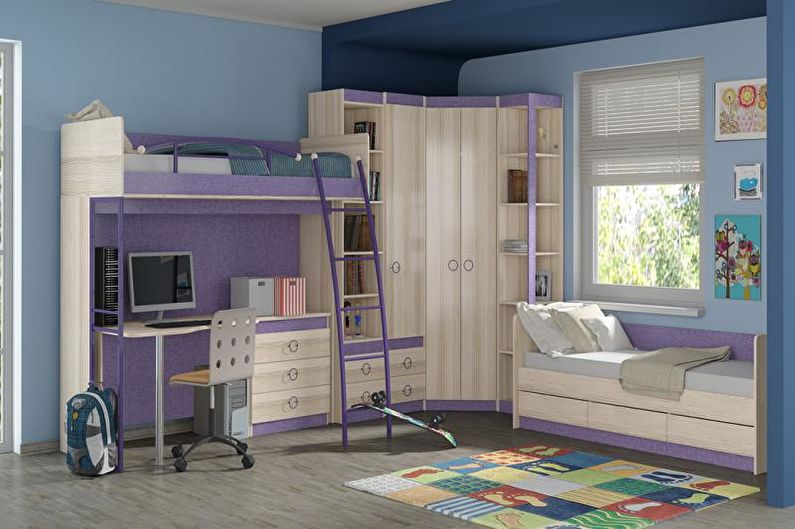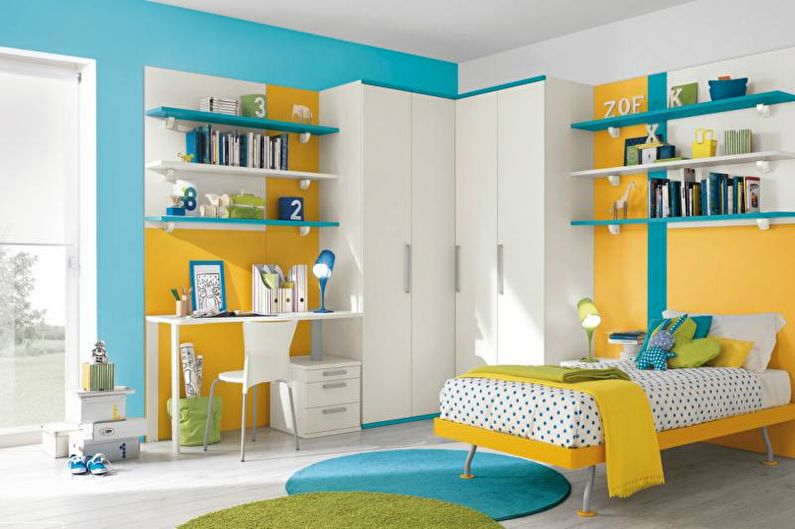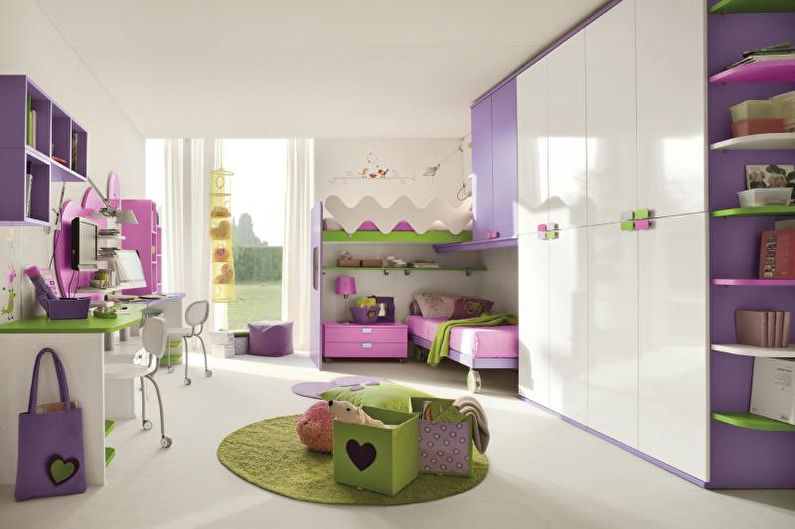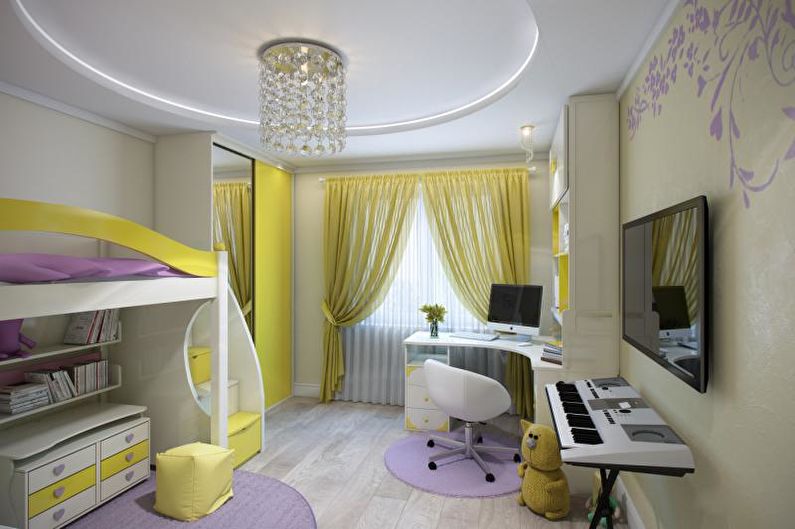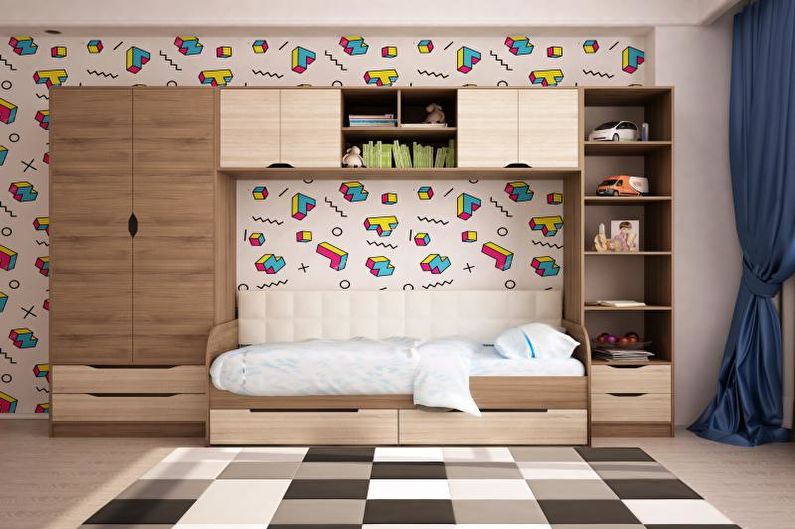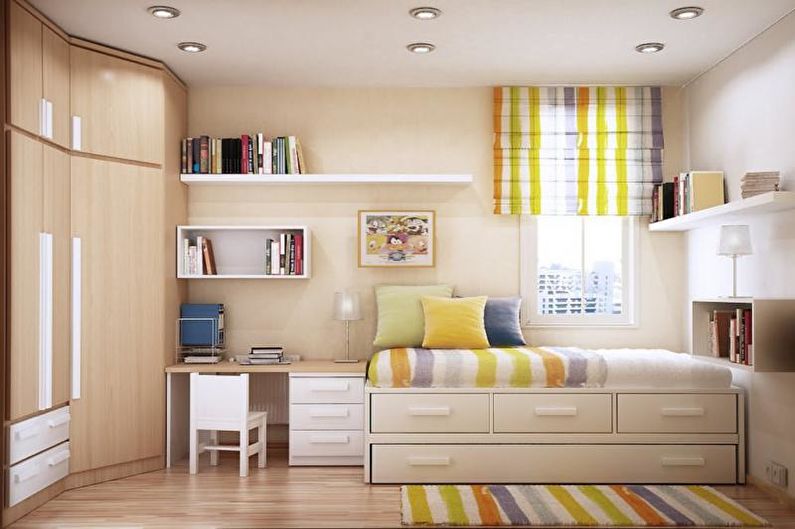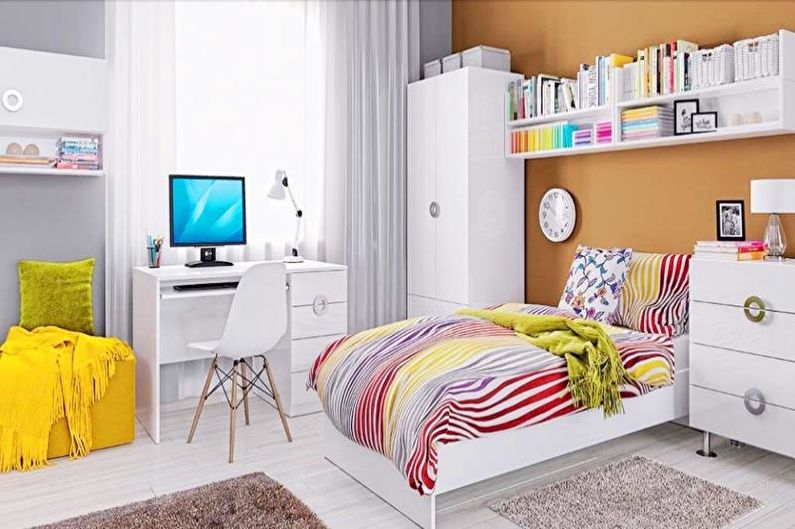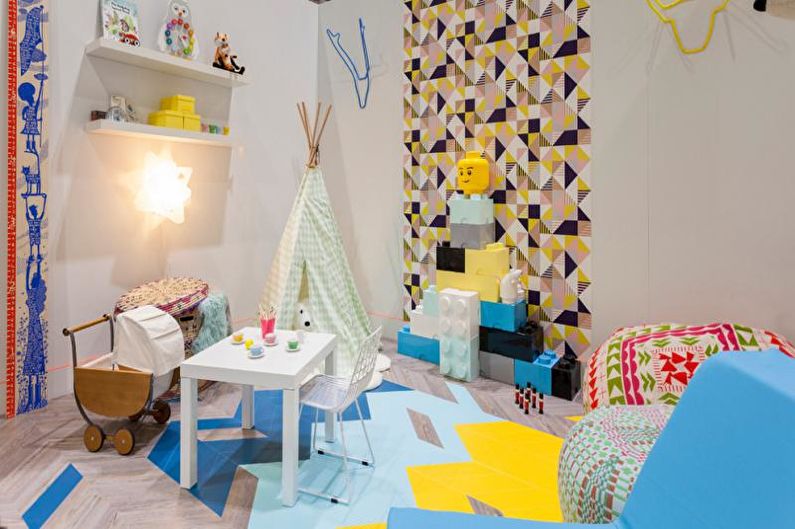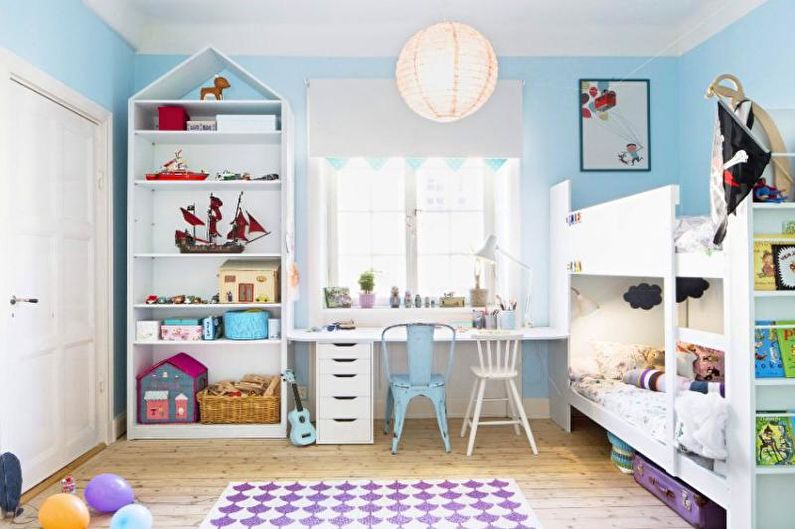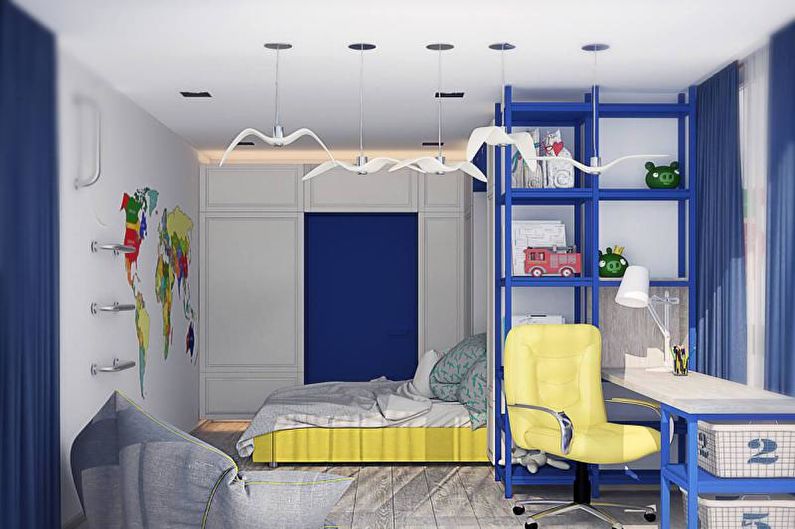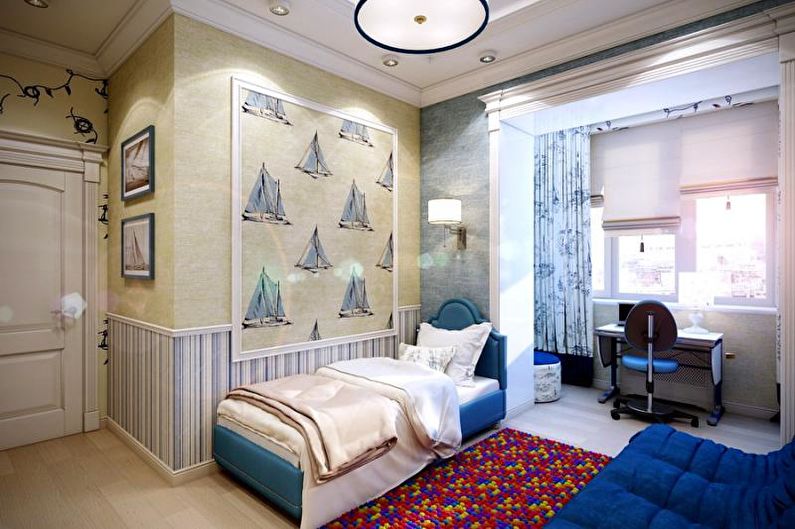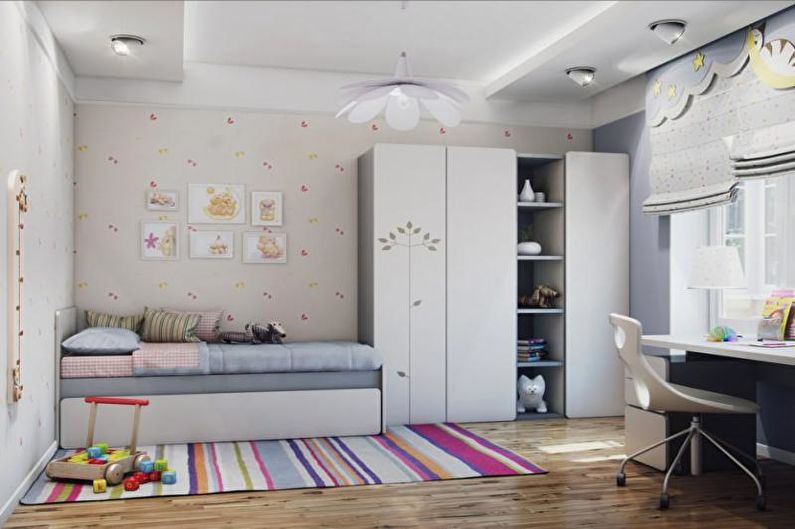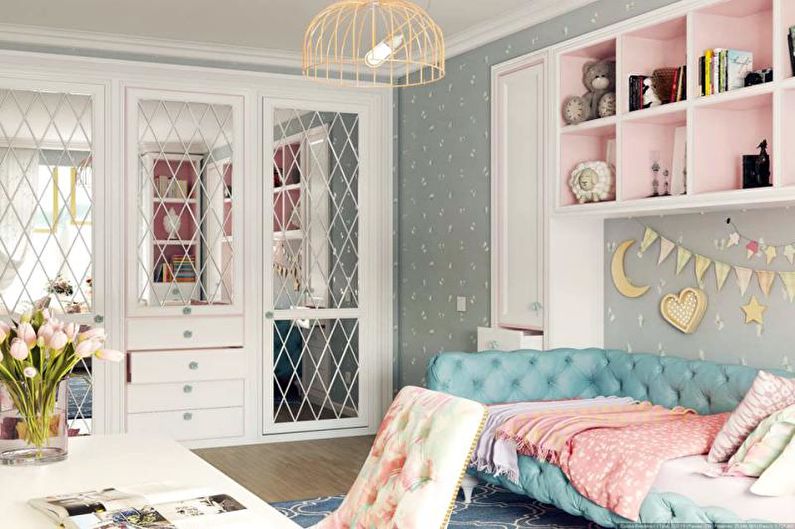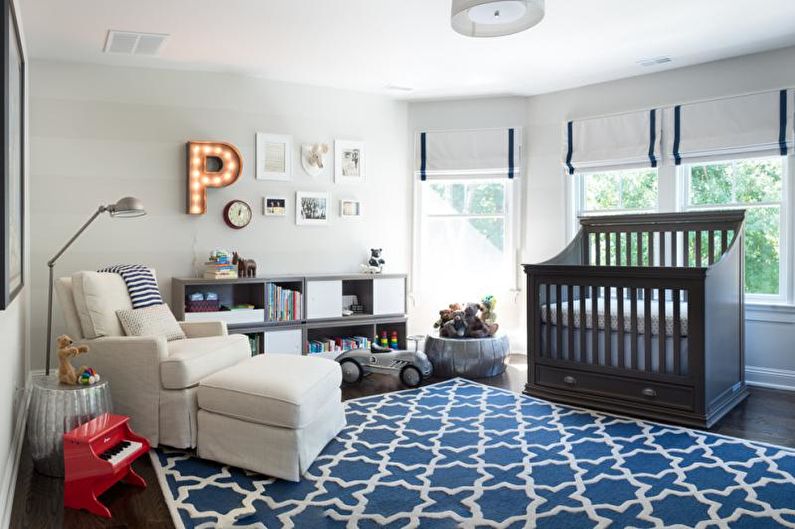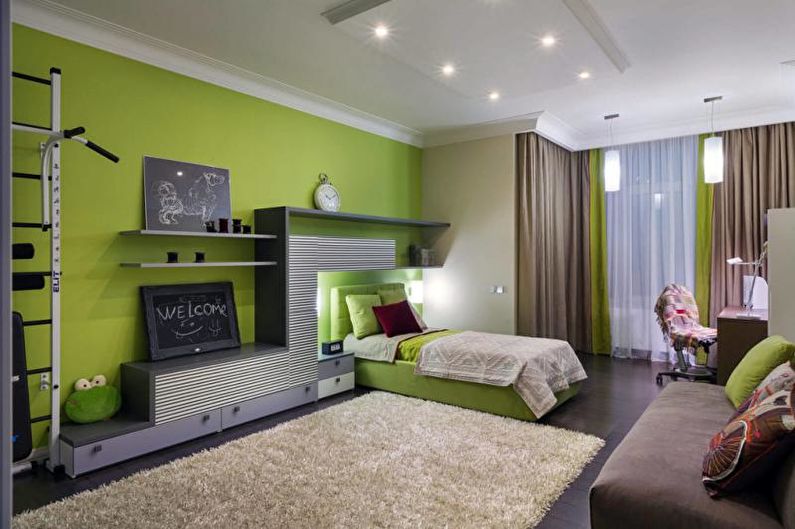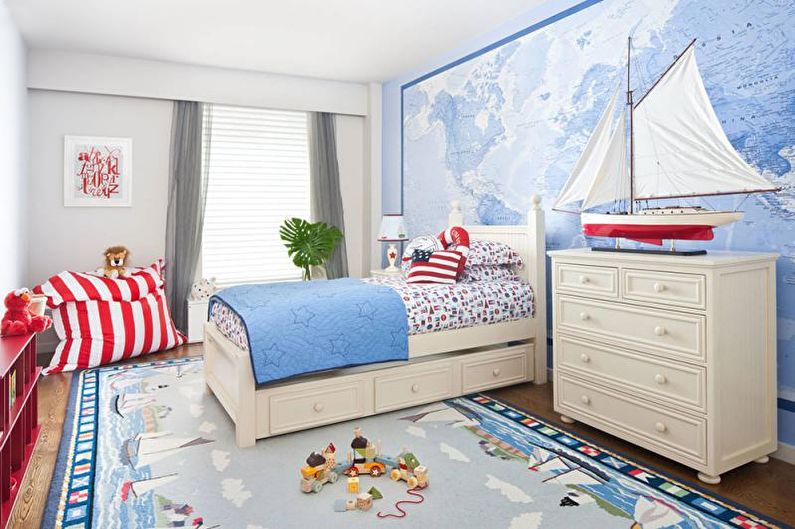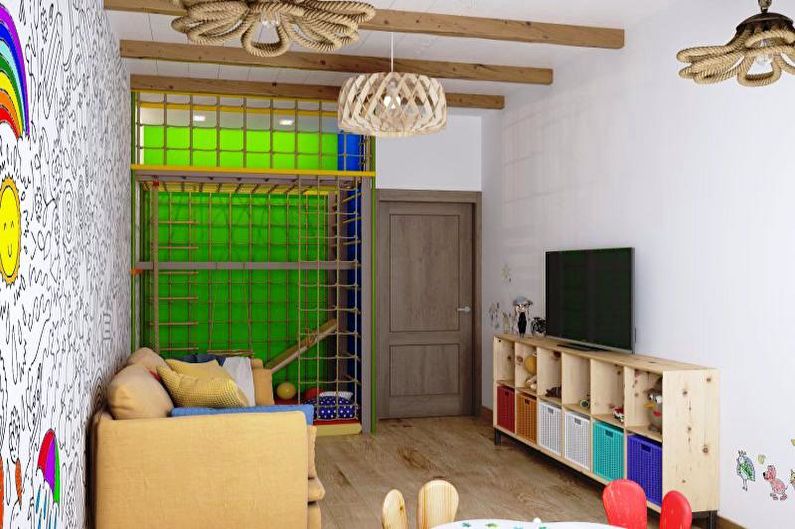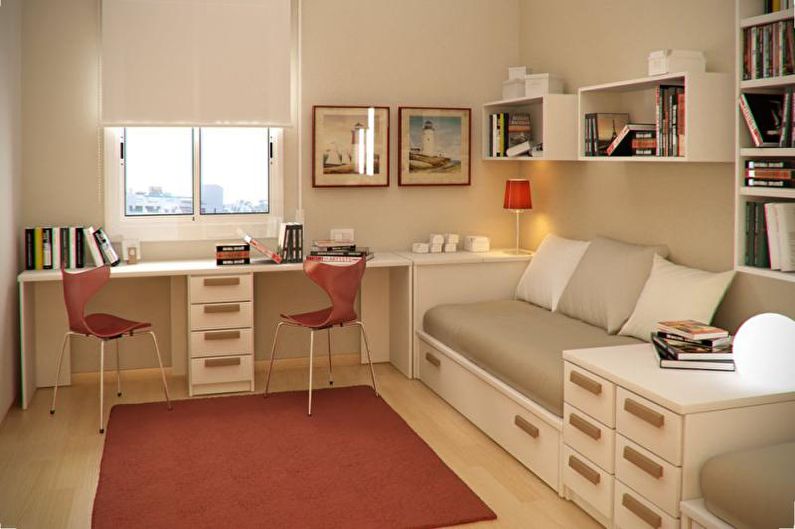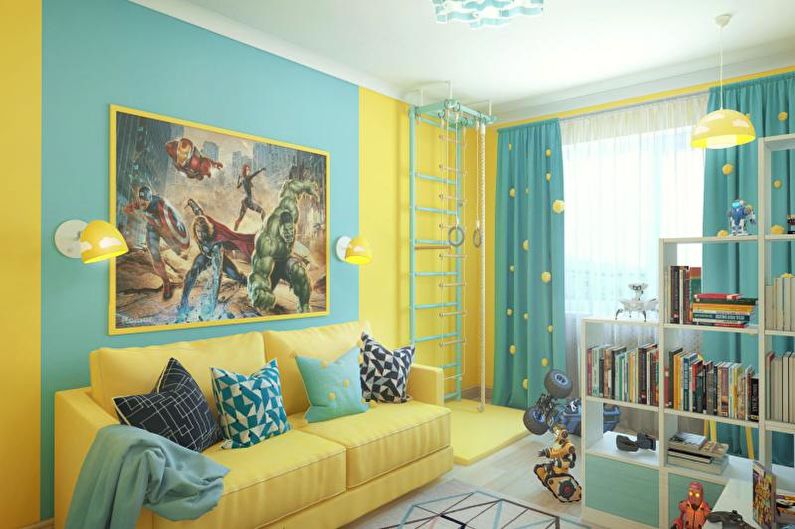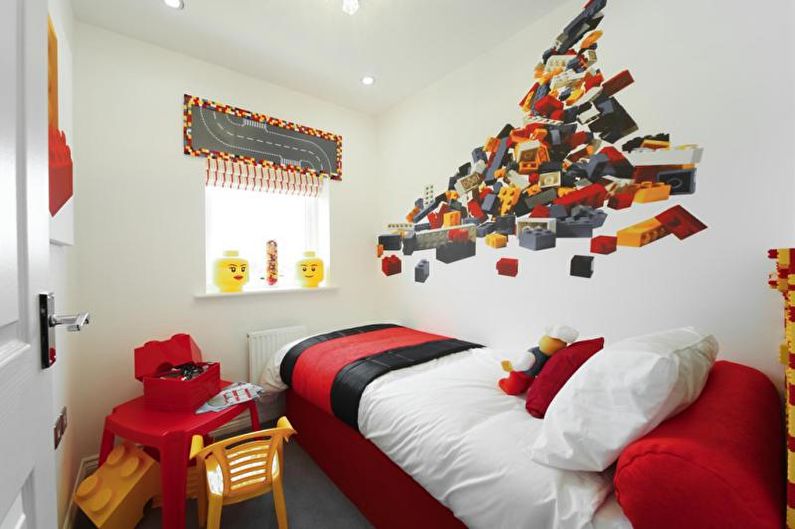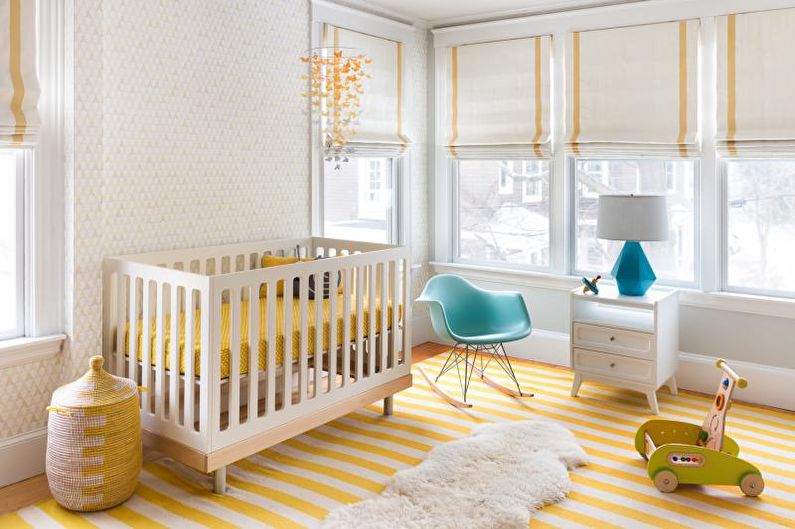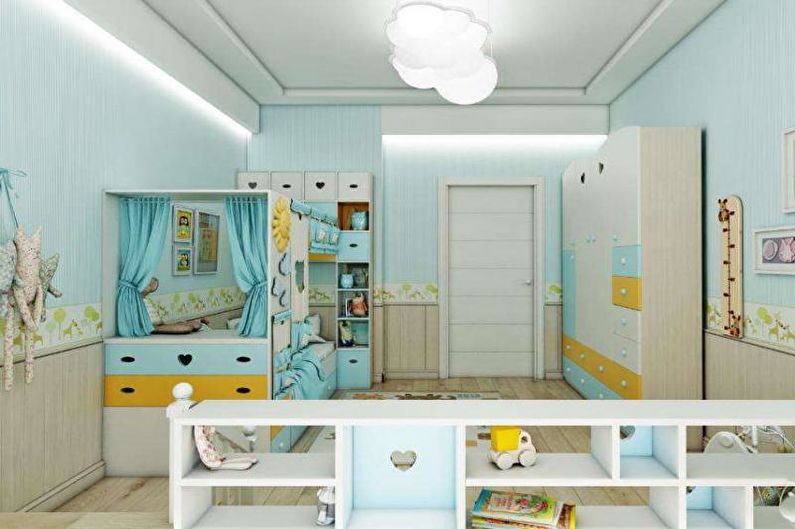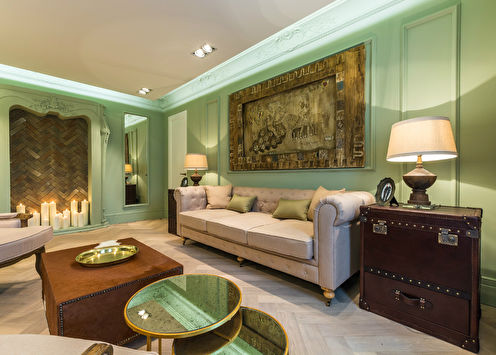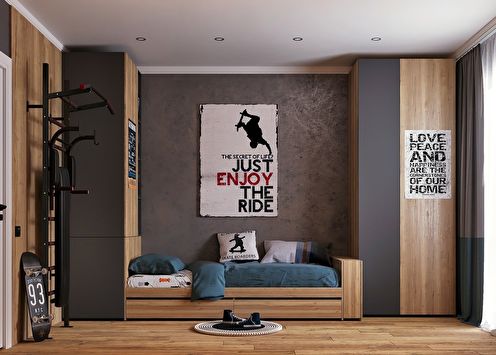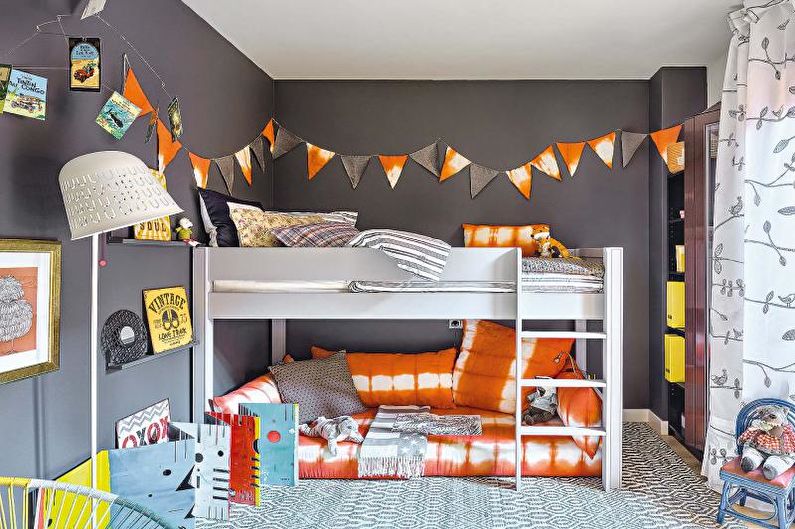
The choice of colors for the interior of the nursery is very important, because the room should not only be beautifully designed or comfortable, but also functional. Not only children spend time here, but also adults who prefer pastel and calmer colors to colorful flowers. However, the child will more like to play, study and relax, surrounded by bright colors, and therefore you should understand how to correctly design a room. Here are the recommendations of psychologists and designers on how to choose color combinations for the nursery interior.
What designers advise
Making out the nursery, it is necessary to consult with the owner of the room, who should express his own opinion. Parents are advised to consider the wishes of the baby when arranging the room.
When choosing between dark and light shades, give preference to the latter. The child will be more comfortable in a bright room, and consider the “light” tones to be perceived as the best solution for the child, which will serve as a wonderful background for colorful accents (various accessories and decorative elements).
Carefully approach the choice of achromatic palette. Shades of gray, black and white should not be used, as they say, "in pure form." Positive emotions will be given to the child by completely different color combinations, and the contrast of light and dark will create, especially in younger children, a negative psychological attitude.
In no case do not choose dissonant tones. Remember that it is better to choose only two primary colors, and white will help dilute the palette, which makes other shades more saturated and airy.
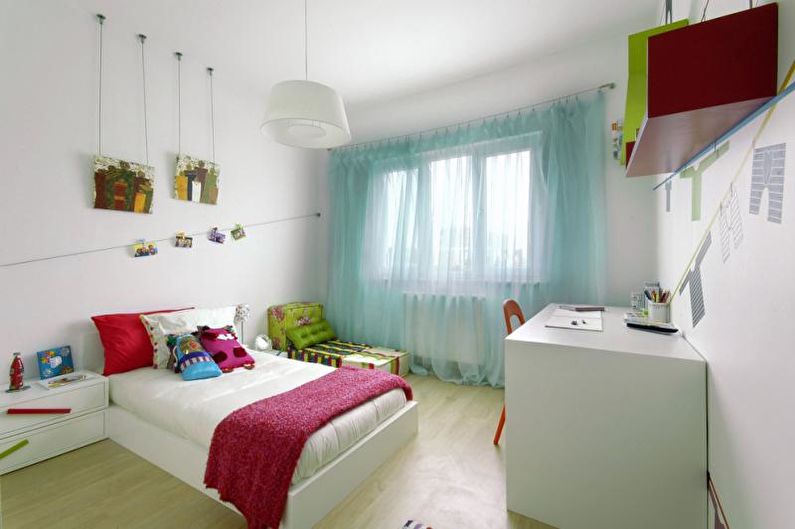
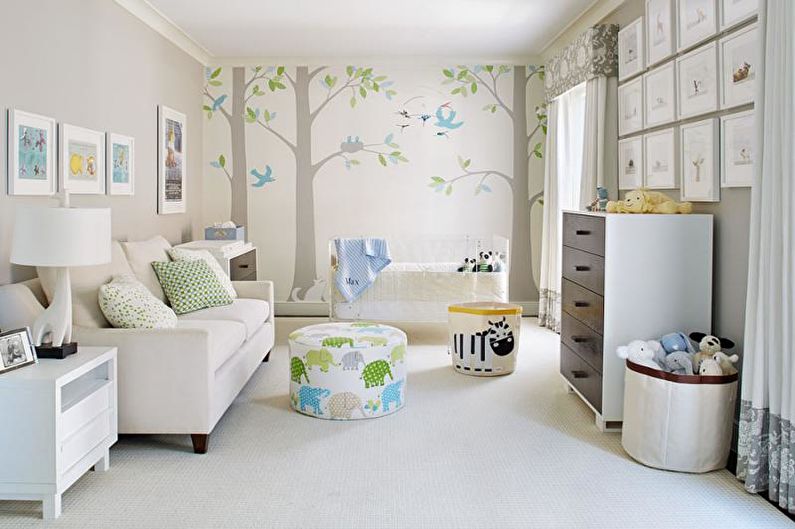
How to choose color schemes
There are general advice from competent psychologists that should be considered when choosing colors for a nursery. The moment associated with the psychological impact of the shades directly affects how comfortable it will be in the room. Let's walk through the colors of the main spectrum and their shades.
Blue and blue have a positive effect on the nervous system, but it is important to use only light colors for this purpose, especially if the room is for a small child. You can combine blue with sand, yellow and peach. Such combinations exclude overexcitation of the nervous system, which is important for very active babies.
Red, yellow and orange are not recommended to be used as a basis in the design of the room, because they can serve as irritants. However, accents of these colors are allowed and can decorate the interior.
Green can be safely used as the main color, it has a positive effect on the body, increases visual acuity, improves mood, and helps to normalize sleep. This is the best option for the background, especially if several shades of green are combined in the interior. For example, you can paint the walls with delicate light green, and pick up the decor in colorful emerald colors.
Violet for interior decoration of a child’s room helps to concentrate and open the creative potential of the child. Shades of this color are suitable for those children who are actively aware of the surrounding reality. The degree of saturation can be changed, depending on age and individual preferences.
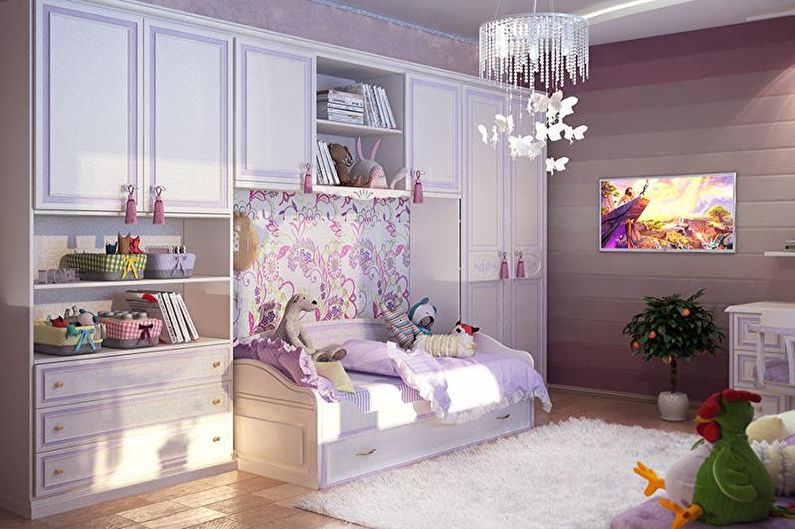

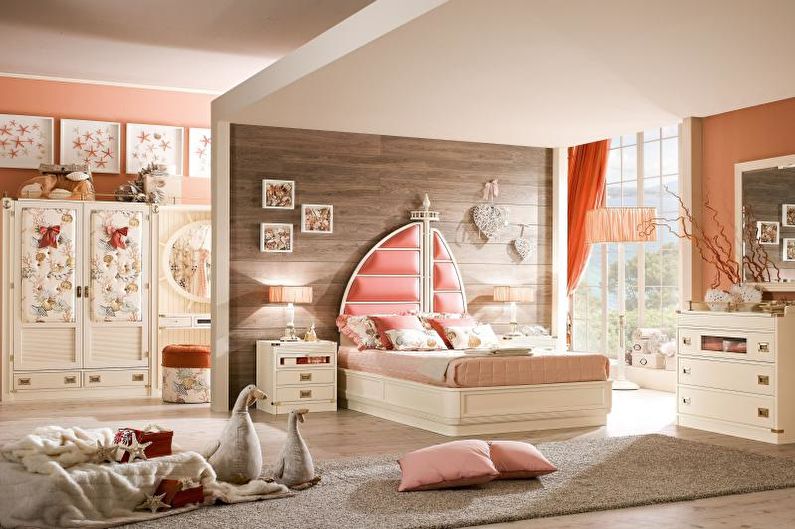
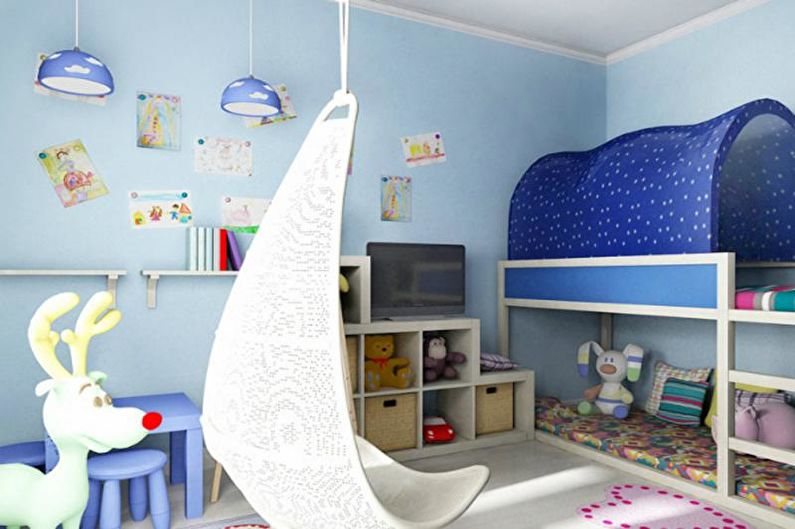
Palette from the picture
When creating an interior from scratch, it is recommended to use the original way of selecting color solutions - using a picture or photograph. It can be a variety of images, most importantly, analyze color combinations. Special applications and services that generate a color palette will help you do this in a few moments.
This technique works even in a situation where it is only necessary to supplement the interior of the children's room. You can take a picture of, for example, a bed and a wardrobe, and then determine exactly how best to decorate the walls and other elements of the room.
Shades can be contrasting, complementary, etc. Remember that creating an interior entirely from colorful flowers is not recommended. A large number of bright colors will prevent children from falling asleep and feeling relaxed. It is best if the room combines calm and colorful tones.
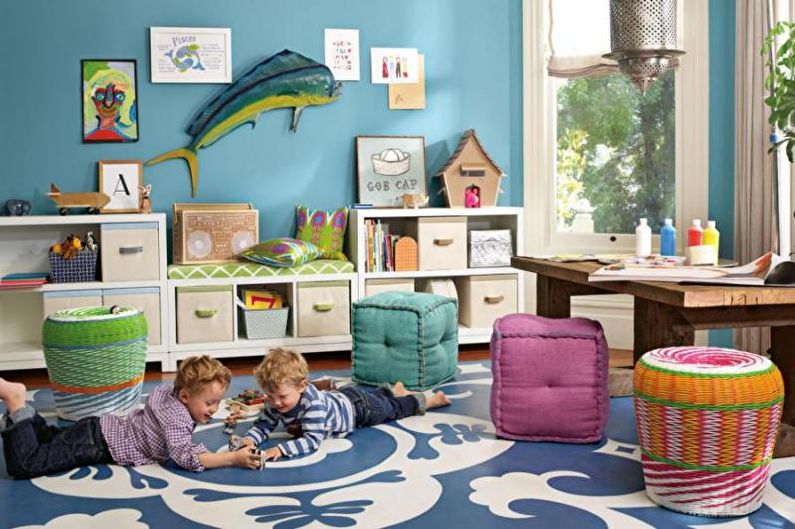
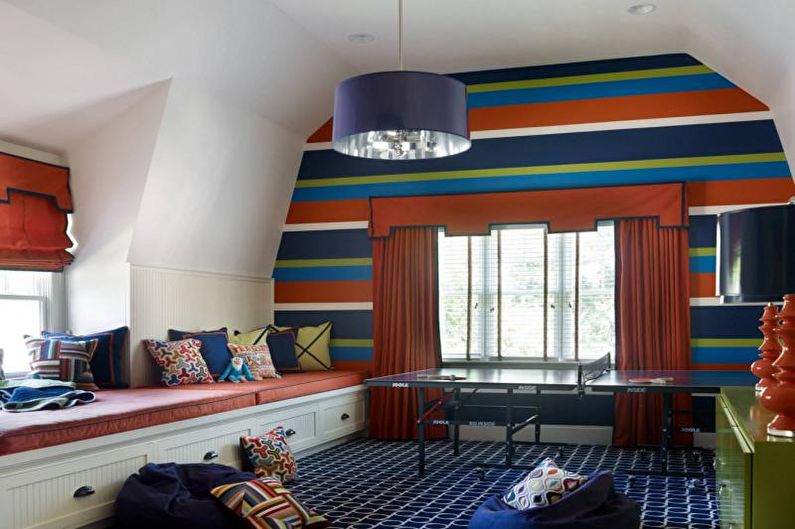
Color options
There are several ways to combine shades in a children's room, each of which has its own advantages and disadvantages. Consider the most appropriate color combinations.
Neutral background and accents.
The first way is to combine a neutral floor and walls with bright pieces of furniture, decorative elements and accessories. The main advantage of this option is that it is easy to implement. Such an interior implies the presence of accents in the form of textiles - pillows, bedspreads, curtains.
Remember that decorative elements should be pleasing to the eye, but in no case do not choose excessively colorful accessories. If there are too many accents in the room, such an interior is perceived as "lurid" and does not allow to relax. Pick two or three main shades for your decor. In such a situation, the room will look harmonious and tastefully decorated.
As a result, colorful colors can stimulate active behavior, and a neutral background - “pacify” the baby when necessary. Pay attention to children's temperament, and also take an interest in the recommendations of a psychologist. Thus, you can choose shades individually, so that they perfectly match the character of the child.
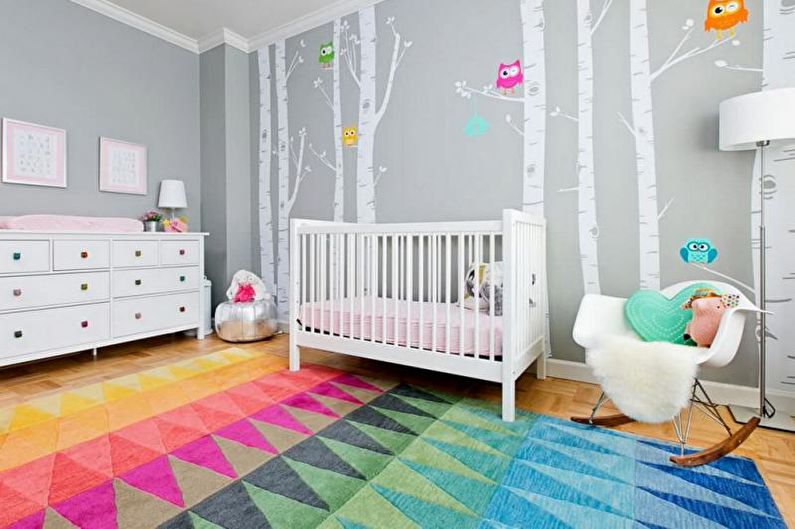
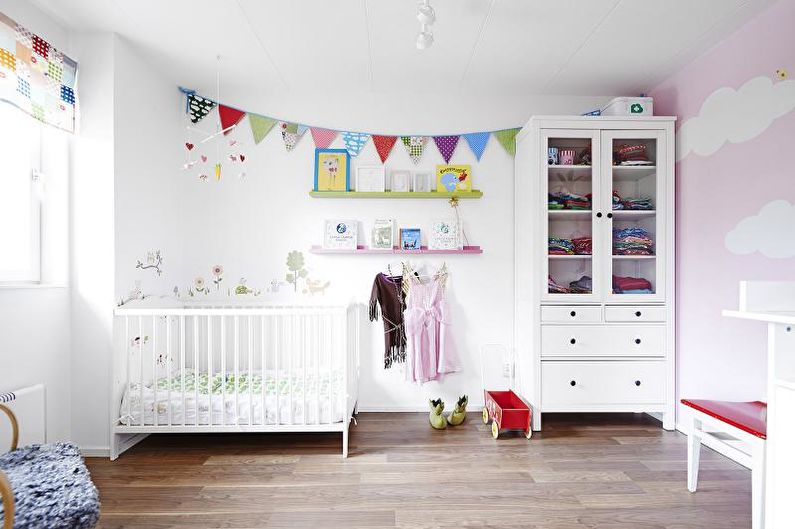
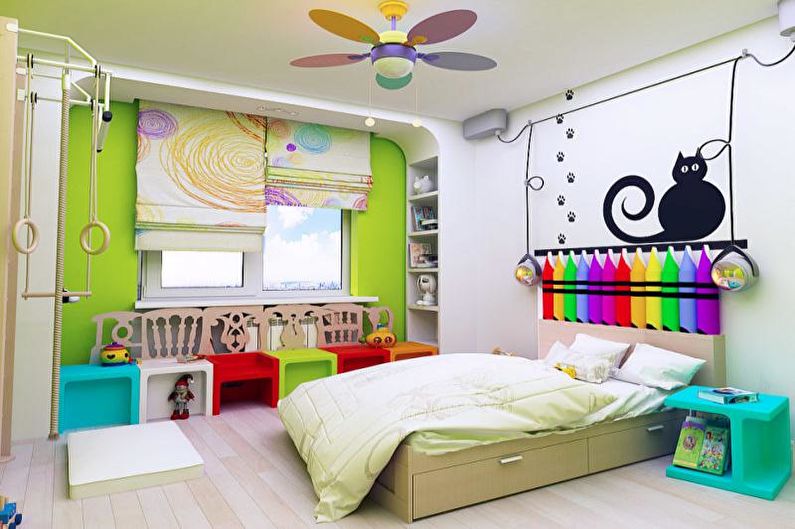
Zoning nursery
The second option is to divide the children's room into zones. This method involves the design of a relaxation area (bedroom, with a bed) in calm, gentle shades. The game zone, on the contrary, can be bright and colorful to further stimulate the activity of the baby. The place for study is decorated in pastel colors, so that nothing distracts children from classes. If the child is still a few years old, and he does not need intense mental work or thoughtful training, the corner for classes can be made out in juicy, eye-catching shades.
Do not be afraid of contrasts if they are to your child's liking. In this case, the room will not look boring. However, remember that in everything you must comply with the measure. This is especially true for orange and red. Let the variety of shades be noticeable in the nursery, but do not turn it into an excessively colorful place.

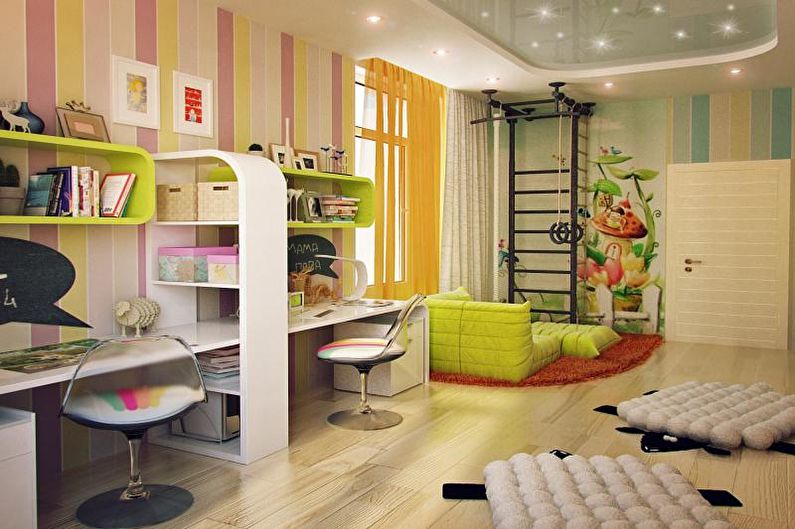
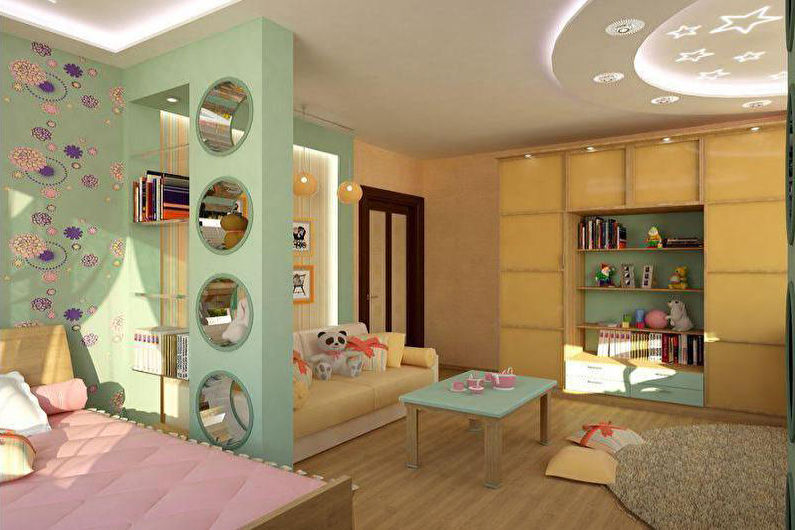
How not to fall into the trap of stereotypes
It’s no secret to anyone how firmly rooted the stereotype that “pink suits girls and blue suits boys”. There are many other options, you just need to try to be creative. The main thing is that all the selected shades correspond to each other.
For example, for girls, instead of the standard abundance of pink, a tender lilac as a background and a darker lilac, as well as yellow in decorative elements and accessories, are better suited.
The room for the boy can be decorated with dressing materials of light green and calm brown, and let the textiles and furniture be orange, emerald, etc. Show imagination and you can create a beautiful and functional interior.
What shades can be recommended as the best color scheme? It can be expressive natural tones, fruit and juicy summer colors, for example, the following: carrot, lime, sky blue, sunny yellow, delicate pink or lilac, apple green.
Be sure to ask the child what colors he prefers.You should not immediately offer your options without asking the opinion of your child.
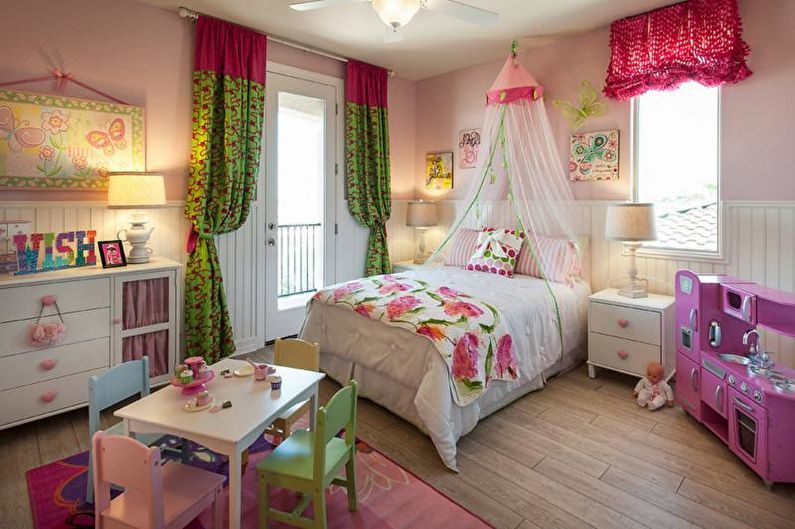
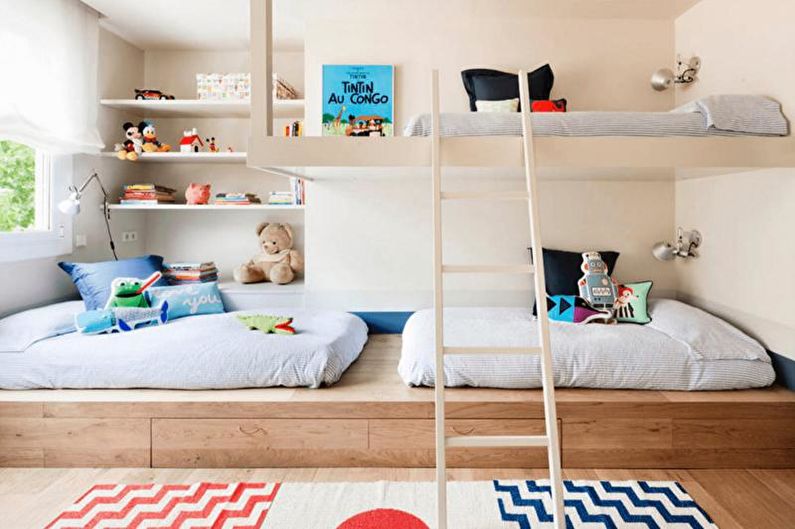
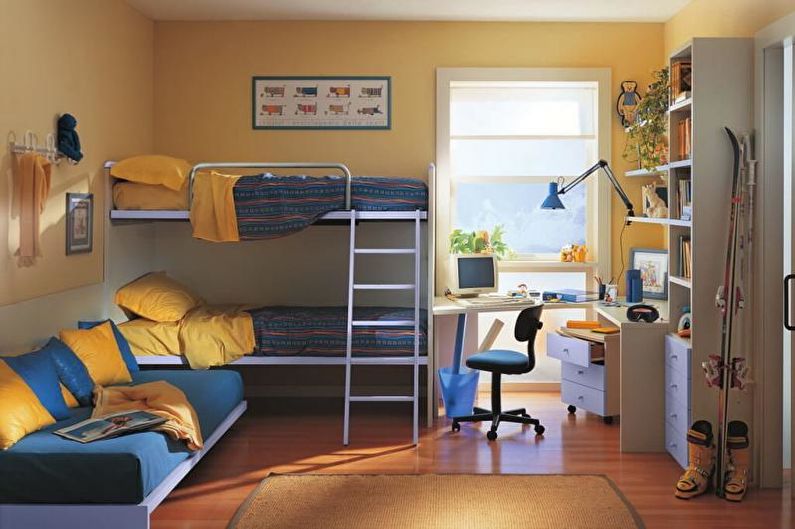
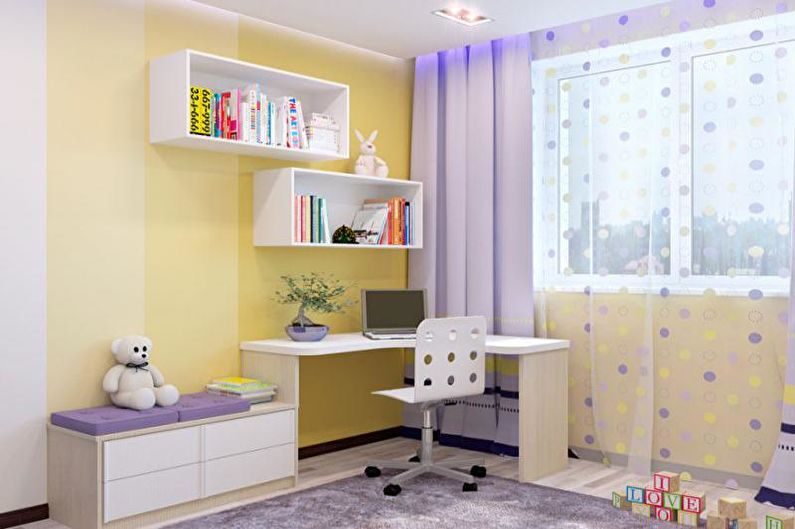
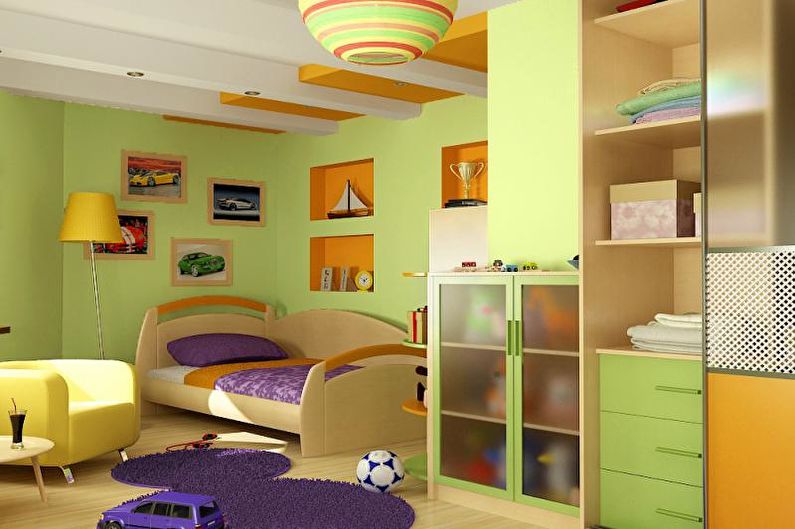
The combination of colors in the interior of the nursery - photo
To imagine the beautiful interior of a children's room without illustrative examples is quite difficult. Therefore, we recommend that you look at how the combinations of various colors and textures look like in reality. Our selection of photos will help you with this. Get inspired!
